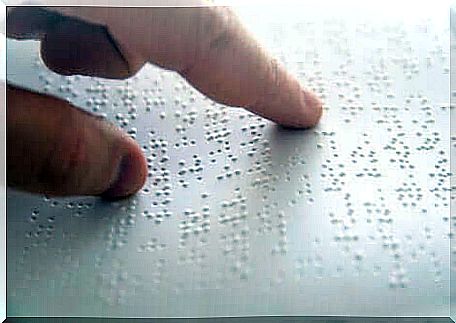Visual Impairment: What You Need To Know

Around 2,200 million people in the world are visually impaired, according to data provided by the World Health Organization (WHO). Of these, around 1,000 million may have prevented this condition with adequate and timely treatment.
The WHO also reports that visual impairment is more common in rural areas, among the poorest, among women, the elderly and ethnic minorities. The aforementioned data confirm the link between this problem and the difficulty or inability to access adequate treatment in time.
What is visual impairment?
Regarding the definition of visual impairment, there is no absolute consensus as to the limit between visual impairment and disability as such. Nonetheless, one of the most accepted meanings is the one we share in the following lines.
Generally indicates people suffering from blindness and those with a significant deficit. It is therefore a concept that encompasses any serious vision disorder, regardless of the cause.
We can complete this definition by remembering that the problem must limit the performance of certain activities, such as reading, writing, orientation and mobility. In turn, blindness is defined as any severe form of visual impairment without necessarily complete absence of vision.

What are the possible causes?
The main causes of visual impairment and blindness are cataracts, ametropia, trachoma, onchocercosis, glaucoma, diabetic retinopathy, and age-associated macular degeneration. Let’s see them in detail:
- Cataracts : are considered the leading cause of blindness in the world. It is believed that they correspond to 43% of cases and opacify the lens.
- Diabetic retinopathy : is the leading cause of vision loss in developed countries. It is typical of those who do not control blood sugar levels. It progresses towards progressive blindness starting with small ocular hemorrhages.
- Age-associated macular degeneration : It is the second leading cause of visual impairment in developed countries. In principle, it causes blurring of central vision, but if it advances it can degenerate into blindness.
- Glaucoma : it is responsible for about 15% of visual impairment cases worldwide. It leads to the loss of peripheral vision due to an increase in the internal pressure of the eye.
- Trachoma : This is an infection that affects both eyes and is the main cause of infectious blindness. It is more prevalent in developing countries.
- Ametropia : This term includes myopia, hyperopia and astigmatism. It corresponds to the inability of the eye to focus on an object due to a disproportion between the length of the eyeball and the power of its internal lenses.
- Retinitis pigmentosa : in this case, peripheral and dark vision is reduced. It includes several chronic diseases of genetic origin.
Identification, degrees and types of visual impairment
Visual disturbances are detected during the visit performed by the optometrist or ophthalmologist. Difficulty reading, seeing up close or far, capturing images with sharpness or the presence of conjunctivitis or suppuration should be subject to medical examination.
There are four degrees of visual impairment, which can be classified according to the sharpness of the person’s eyeballs:
- Mild: visual acuity less than 50%.
- Moderate: less than 33%.
- Severe: degree of visual acuity less than 10%.
- Blindness: the values detected during the examination are less than 1%.
On the other hand, from a functional and therefore legal point of view, the classification is as follows:
- Partial: when one eye is seriously affected or both eyes are partially affected.
- Total: Despite severe loss of vision in both eyes, visual acuity of 0.1% or more is achieved.
- Absolute: in the event that the visual acuity does not exceed 0.1%.

Needs of a person with visual impairment
A person with visual impairment can rely on various aids to better cope with their condition . For orientation and mobility outside the home there are sticks, guide dogs and, nowadays, technological tools such as GPS, equipped with applications specially designed for those suffering from vision problems.
For the visualization of objects, based on the degree of visual impairment, it is useful to make use of greater lighting or devices that allow you to magnify the characters, magnifying glasses and high-powered glasses. In the presence of blindness, the Braille method is a very effective system for reading.
For obvious reasons, the house must be adapted to the person’s condition. Furthermore, nowadays more and more effective aids are available, such as electronic visors for augmented reality and so-called smart glasses or smart glasses.









